
94% of researchers rate our articles as excellent or good
Learn more about the work of our research integrity team to safeguard the quality of each article we publish.
Find out more
ORIGINAL RESEARCH article
Front. Sustain. Food Syst. , 30 November 2021
Sec. Land, Livelihoods and Food Security
Volume 5 - 2021 | https://doi.org/10.3389/fsufs.2021.758363
This article is part of the Research Topic Planning for Agriculture and Sustainable Food Systems View all 10 articles
 Simon T. Berge1*†
Simon T. Berge1*† Koudima Bokoumbo2†
Koudima Bokoumbo2† Kuawo Assan Johnson3‡
Kuawo Assan Johnson3‡ Jacob Afouda Yabi4‡
Jacob Afouda Yabi4‡ Rosaine Nerice Yegbemey5‡
Rosaine Nerice Yegbemey5‡Cooperative economics looks at market failures as areas for development. The cooperative development process, however, requires member engagement or cohesion in the process according to the Cooperative Management Equilibrium Theory. This cohesion requires an awareness and understanding by the cooperative members of the market failure to develop the capacity to address the failure. This article looks at the effects of government agricultural programs on economic, environmental and social sustainability. The questions we ask is how does a focus on economic development push against social and environmental sustainability within the agricultural sector in Togo? Does member cohesion within a cooperative represent a form of Polanyian double movement through social and environmental cohesion? The current development models utilize what Sen refers to as an austere mode of development which forgoes social or environmental considering them luxuries. Does the focus of economic development build capacity only for economic performance within the Togo agricultural sector at the expense of social and environmental sustainability? Utilizing Deep Participatory Indicator Approach (DPIB) approach this paper examines the economic, environmental and social indicators within two prefectures in the Plateaux Region of Togo. Indicators were separated to show the differences between individual or cooperative producers. As cooperatives it was anticipated that a greater emphasis on social and environmental sustainability would be created through cohesive social action. This study found that the emphasis on economic development included in government programs built development capacity within cooperatives emphasizing their cooperative market cohesion.
Development economics has been focused on neoliberal approaches to community development emphasizing income growth and consumption for many years. For example, Rostow (1990) put forward the notion of stages of economic growth focused on consumption. Nobel laureate Kuznets' (1955) presented the inverted U hypothesis suggesting poor countries can outgrow inequality through re-distributed income created by increased economic growth. Development economics continues to examine development through the lens of increased economic activity in an attempt to “raise all boats” via a larger economic tide. Kuznets' Inverted U hypothesis shows that poor counties maintain a poor redistribution of income leading to greater inequality yet income remains a key focus of economic development practice.
Developing countries that follow this economic development paradigm fall prey to the same economic issues as developed countries, e.g., income inequality, food insecurity, the wealth gap. Greater inequality due to poor wealth re-distribution can be seen in developed countries like modern day China even as it becomes a powerhouse of economic growth. Authors such as Piketty and Goldhammer (2014) have discussed wealth distribution in-depth. These authors show that there is a greater wealth to income ratio in developed countries suggesting that growing larger economies does not improve wealth distribution or decrease inequality, nor will it in the future as inheritance takes a large role in wealth re-distribution (Piketty and Goldhammer, 2014). What is missing from the development approach is the multi-disciplinary nature of community development. Development is not simply increased wealth within a community leading to greater income distribution. Community development is increase interaction, shared direction, community safety, social assistance and so much more (Sen, 2000; Harwood et al., 2016; Taylor and Lybbert, 2020).
Even with the understanding that development is a multi-disciplinary issue touching on topics as complex as poverty, inequality, and human development the predominant development approaches are still influenced by neoliberal market beliefs. Since the 1980s a trust in market forces to correct developmental inequalities remains the major driver of development approaches. Many governments focus on export-oriented economic growth in an attempt to entice greater amounts of foreign capital into their county's economies. This export-oriented approach seeks to grow the size of the economic pie within the country with the hope that the larger pie will improve wealth distribution. According to Sen (2000) the export-oriented or market based approach to development is a type of austere attitudinal mode of development where things such as social safety nets, social services and even democracy are luxuries that must give way to the development process. This austere attitudinal mode fits the laissez-faire market approach utilized by the World Bank and the International Monetary Fund. The World Bank and the IMF direct developing governments to implement austerity measures as a means to focus on economic growth forgoing the multi-disciplinary nature of development. Abouharb and Cingranelli (2006) went so far to suggest that World Bank Structural Adjustment Agreements (SAAs), meant to improve economic performance in developing countries, actually worsens government respect for physical integrity rights such as health, education and human welfare.
In contrast to this austere attitudinal mode of development Sen (2000) suggested there is a “friendly” process for development that relies on mutually beneficial exchanges or working with social safety nets, improving political liberties and social development. This friendly approach to development is a component of Sen's Capability Approach that focuses on the moral significance of individuals' capability of achieving the kind of life they value rather than a universally accepted market based developed life. The market based approach to development simply assumes each community has similar needs and wants which is a disservice to the unique nature of communities. Assuming that an active, growing economy will provide for every individual within the community as well as all the community's needs is naïve.
The question this paper seeks to address is whether cooperative development is a form of push back, or Polanyian double movement, against the austere development approach that is prominent in current economic development practice. By examining the development approach utilized by the Togo Government for the agricultural sector in Togo's Plateaux Region this paper will assess if cooperatives represents an environmental or social push back against a strict economic development paradigm. The outcomes will be examined through the lens of Cooperative Equilibrium Management Theory as a framework to better understand the cooperative organizational form as it relates to Polanyian countermovement and Sen's Capability Approach to development.
Equilibrium Management Theory as outlined by Côté (2019) presents cooperatives as dualities separated into membership and the market. Three cohesions must be in place to ensure a functioning cooperative that addresses both the members' needs and the business needs of the cooperative. Cohesion among members represents the expression of members' needs within the cooperative including social and environmental concerns. A cooperative with a unified membership that has the capability to clearly express their needs within the cooperative would be considered to have strong member cohesion. On the other side of the duality is the need for Cooperative Market Cohesion. A cooperative that does not consider its business competencies, strengths and weaknesses or other economic success factors within the market would have minimal Cooperative Market Cohesion. The final cohesion that must exist within the cooperative is the combination of the first two cohesions in a balanced approach to the cooperative's operations known as the Cohesion between Members' Needs and the Economic Activities of the Cooperative (See Figure 1).
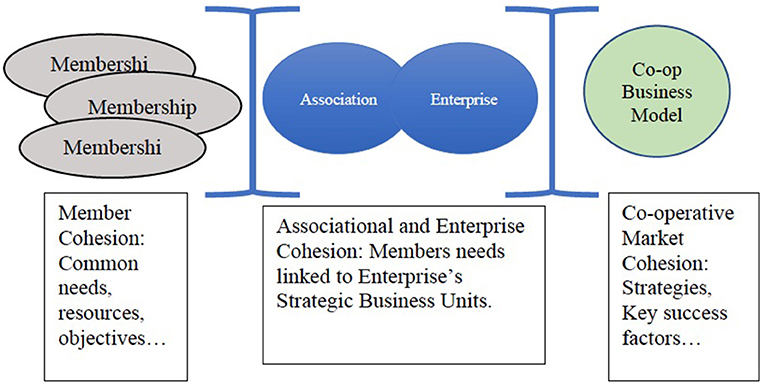
Figure 1. Co-operative duality reprinted (adapted) from Côté (2019). Cooperative management: an effective model adapted to future challenges. Montréal (Québec): Éditions JFD.
This balancing between Member Cohesion and Cooperative Market Cohesion is reminiscent of Polanyi's (1957) double movement. The membership (society) through Member Cohesion pushing back against market forces through Cooperative Market Cohesion. The social and environmental mission of the cooperative as defined by the cooperative membership which Polanyi would identify as the social protection against marketization. The social protection moves production and resources within the cooperative toward social rather than economic needs. Polanyi's would see Cooperative Market Cohesion as the liassez-faire movement to expand the scope of the market as the cooperative seeks a strategic fit within the market to ensure economic viability of the organization (See Figure 2). A final balance between Member Cohesion and Cooperative Market Cohesion would result in Cohesion between Members' Needs and the Economic Activities of the Cooperative to form an organization that balances all three social, environmental and economic sustainability indicators within the cooperative. This ability to balance the three sustainability areas assumes the cooperative has the capability to manage these divergent needs. However, the approach to cooperative development, as will be shown in this study, emphasizes economic outcomes rather than social or environmental indicators.
The capacity to balance all three sustainability indicators in the development process speaks to Sen's Capability Approach. Sen speaks of the freedom individuals have to achieve outcomes that they value. Individuals, however, can only achieve freedom to accomplish what they value if they obtain an understanding of the processes of development to achieve these goals. Being inundated with claims of prosperity for all upon achieving a stable and growing economy focuses individuals to enhance their economic capabilities at the expense of social or environmental interests. Consider Sen's example of the bicycle. The bike has characteristics of transportation but only if the individual using the bike can ride it. The same can be said for development. Development can create a balance between economic, social and environmental interests, but only if the individual engaged in the development process is made aware of the inter-related nature of all three sustainability indicators.
As we will see in the next sections of this paper the economic sustainability of agricultural producers in the Plateaux Region of Togo is higher than average if the producer is a member of a cooperative. However, this economic sustainability is linked to the below average social and environmental sustainability scores of cooperatives as measure by the Deep Participatory Indicator-Based approach (DPIB). The next section of the paper will outline the background environment in which the co-operatives operate and will be followed by the methods section to clearly outline the DPIB approach used. The results section will outline the details of the environmental, economic and social sustainability scores calculated using the DPIB approach. The discussion and conclusion section will show that the approach to agricultural development used by the Togo Government was based on traditional economic development concepts. The Togo Government focused on building economic capabilities within cooperatives that resulted in a push back against the environmental and social sustainability of Togolese agricultural maize producers.
In 2018 the Togolese Government put forward its National Development Plan (NDP) 2018–2022 (Togolese Government, 2018). The NDP focuses development on networks of small producers supporting Agropoles (Agricultural Transformation Poles) throughout the country. Agropoles are derived from the growth pole concept suggesting a center, or foci, for development within a community linked to other centers via corridors of land (Perroux, 1950). These geographically focused agropoles agglomerate activities that produce outputs meant to enhance performance within the community, particularly economic performance (Sibbons and Boudeville, 1967; Ivarah, 2003). Brebbia et al. (2012) suggest that the function of Agropoles is to maximize the economic attributes of a particular center, emphasizing some special feature of place to encourage the growth-inducing nature of the geographic context. For example, in Brebbia et al.'s (2012) study the regional agropole emphasized agricultural production similar to our study. In our study the producers focused on maize while Brebbia, Basorun and Fasakin's study examined rice producers. Omuta and Onokerhoraye (1986) suggest that a major factor in the creation of structural differentiation through agropoles is to utilize a propulsive industry that interacts with the agropole centers and peripheral industries. The Togolese Government's NDP chose to focus on cooperatives as a propulsive industry. As a propulsive industry the cooperatives should be characterized by: (i) high interaction with other firms, (ii) high degree of dominance, and (iii) relatively great size (Darwent, 1975).
The Agropoles that the Togolese Government sought to create were to focus on accelerating growth, reducing poverty, develop food self-sufficiency, balance the agricultural trade, and massive agricultural job creation. These goals were meant to be achieved through the modernization of agriculture focusing on productivity, promotion of trade leading to improve export and improved food security along with job creation. With support from the private sector and development partners the Togolese Government sought to allocate resources to the agricultural sector through innovative financing tools. The additional resources were meant to improve yield through mechanization, control water use and strengthen cooperatives related to the processing sector. The Togolese Government also focused on upgrading research and agricultural training centers in the country to achieve its economic targets through increased economic capabilities within the sector (Togolese Government, 2018).
The Togolese Government outlined the following targets: (i) improvement in agricultural productivity of about 10% per year; (ii) significant improvement in the agricultural trade balance from CFA F-44 billion in 2016 to CFA F-5.65 billion by 2022; (iii) a reduction in the poverty rate in rural areas to <50% by 2022; (iv) a reduction in the proportion of children under five suffering from acute malnutrition to 3% by 2022 (Togolese Government, 2018, p. 86).
These economic targets fit well with Sen's austere approach to development as they focus on economic outcomes within minimal reference to social safety nets that would be found in the Capability Approach to development.
The use of large-scale processing cooperatives as propulsive industries was meant to enhance this organization form within the agriculture sector in Togo. As a result cooperatives within the sector focused on the economic goals. Large scale cooperative development was meant to organize farmers in Togo as an economic force as only 8% of all Togolese farmers have grouped together in 2,500 small scale cooperatives across the Togolese Republic. This patchwork of cooperative development created a landscape of small scale cooperative producers that the government does not see as a potent economic force (Togolese Government, 2018).
The questions we ask in this paper is does this focus on developing economic capability within the Togolese agricultural cooperatives stifle the Member Cohesion's push back for social and environmental sustainability? How does Côté's (2019) Equilibrium Management Theory inform us on the development of the large scale producer cooperatives in Togo as propulsive industries? Is the Togolese NDP an example of traditional economic development or a subversion of Sen's Capability Approach through a focus on economic capabilities at the expense of social and environmental sustainability?
With a focus on large scale, processor cooperatives in the Plateaux Region of Togo there needed to be a directed method for analyzing the sustainable outcomes. Recent literature into sustainability measurement offered nearly sixty methods for assessing sustainability utilizing various indicators (Schader et al., 2014; Lairez et al., 2015; de Olde et al., 2016; Zahm et al., 2019). If we consider the sustainability problem within each of the agropoles in Togo as a universal problem, then the use of broad-based indicator methods would have been perfectly adequate. However, these indicator methods show a certain amount of discrepancy in the methodological approach as a result of their universal nature. This universal view of development does not take into account the regional or village level variances that are critical the agropole's development of local resources in a place-based approach. Nor does a universal view provide a means to measure the differences effectively. Therefore, to effectively assess sustainability approaches should be place-based resulting in a plan for monitoring the implementation of sustainability plans for each agropole at the village level. The measurement tool must not only show the positioning of the evaluated indicators in relation to sustainability universally, but also inform sustainability planning at the local level in order to enhance development at the local level via the agropole's development potential.
A directed indicator analysis approach was utilized by the IDEA-Run project initiated by Lobietti et al. (2018) and can be transposed into practice at the local level as shown by Roesch et al. (2016). The IDEA-Run conceptual framework for the development of a sustainability assessment tool was based on the IDEA method which outlines indicators of the sustainability of agricultural operations which fit this project's participants. The IDEA indicators aim to characterize the key concepts taken from the definition of sustainable agriculture:
1. Viability involves, in economic terms, the efficiency of the production system and securing the sources of income of the farming production system in the face of market swings and uncertainties surrounding direct payments.
2. Livability focuses on analyzing whether the farming activity provides a decent professional and personal life for the farmers and their families.
3. The environmental reproducibility of the ecosystems linked with the farms can be analyzed using agri-environmental indicators in particular, which characterize the impacts of farming practices on the environment (Landais, 1998, pp. 14–16).
IDEA method was developed to provide agricultural education programs with a tool for assessing the sustainability of agricultural holdings that are relevant, sensitive and reliable while being accessible to the greatest number of producers. Utilizing the IDEA method, the IDEA-Run project set about building a tool to assess the sustainability of agricultural production systems that is:
1. Systemic, complete, generalizable,
2. A dynamic decision support tool,
3. Educational, fast, and accessible,
4. Designed in a simple and original way (Lobietti et al., 2018).
IDEA method's focus on generalizability, however, does not address some aspects of the Togo cultural environment which could be lost or even hamper the implementation of actions meant to develop sustainable agricultural practices. As a result, an innovative approach to measuring and initiating sustainable activities at the local level was utilized in this project based on the IDEA method. The Deep Participatory Indicator-Based (DPIB) approach focused away from a generalizable approach to a localized, facilitated approach to ensure effective examination of the local nature of the agropoles and cooperative propulsive industries. The DPIB is a participatory, non-rigid approach to the choice of indicators (See Figure 3).
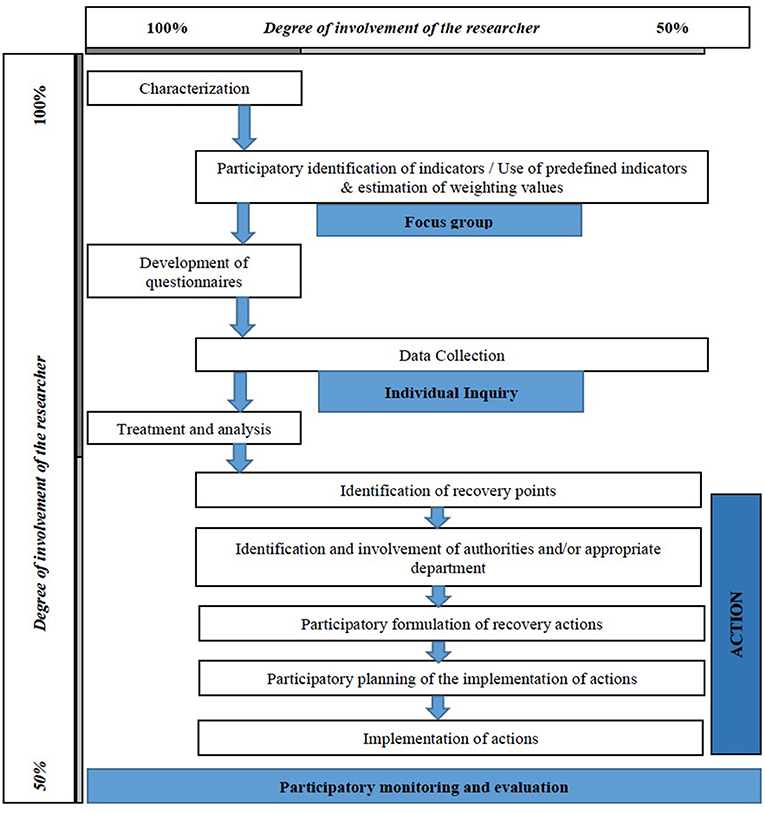
Figure 3. Deep Participatory Indicator-Based (DPIB) approach. As one moves to the right and downwards, the degree of involvement of the researcher decreases.
The DPIB approach initially engaged the researchers in the characterization of the research questions, the development of research tools including questionaries, surveys and focus group agendas followed by the analysis of the collected data. The engagement of participants in focus groups and individual interviews saw the engagement of the research lessen allowing for participants to manage the input into the DPIB process.
Focus groups were organized with producers and extension agents to collect data on current economic, social and environmental situations as well as to formulate the local actions to be carried out in view of the results. Each focus group consisted of, on average, seven people per group. In total, six focus groups were conducted, two for each of the three villages within the two prefectures (see Table 1). Research at the prefectural level made it possible to better define the research area, i.e., the sample size, and to better specify the data to be collected as well as refine the questionnaire used for the survey tool of this project.
Key informant interviews were conducted with self-identified maize producers and community leaders. Utilization of key informants allowed for more in-depth discussions on the current status of maize production in the villages along with future expectations. The key informant interviews were conducted individually with the researcher keeping detailed notes of the discussion. The interviews were conducted in an informal setting allowing the interviewee to freely express their views on the three dimensions of sustainability; economic, environmental and social.
Utilizing the DPIB approach this research completed a comparative study of the sustainability of farms in the Plateaux Region of Togo isolating whether producers are organized in cooperatives or were individual producers to determine if cooperative organizational form affects the definition and uptake of sustainable activities in all three areas of sustainability.
The Republique of Togo has a population base of 7.8 million people (The World Bank Group, 2020) representing over 21 different ethnic groups (McGill University, 2002). The population while growing at a 2.5% rate remains in relative poverty (The World Bank Group, 2020). In 2006 the poverty rate was 61.7% falling to 53.3% in 2017, but the inequality rate remained extremely high in rural areas reaching 69% of households living below the poverty line in 2015 (The World Bank Group, 2020).
The Plateaux Region of Togo is subdivided into 12 prefectures and is bordered to the North by the Central Region, to the South by the Maritime Region, to the East by the Republic of Benin and to the West by the Republic of Ghana. The overall population of the Plateaux Region is just over 1.375 million with an even split of 50.7% women and 49.3% men. The majority, 80.3%, of the Plateaux Region's population resides in rural areas leaving only 19.7% in urban centers such as Atakpame (85,000 pop.), Kpalime (75,000 pop.) and Badou (24,000 pop.). The age distribution for the Plateaux Region's population sees the largest age group in the 0–9 years old group followed closely by 10–19 year olds and then 20–29 year olds indicating a young population (City Population, 2010c).
The study environment, as shown in Figure 4, covered the prefectures of Haho and Ogou both located in the Plateaux Region of Togo.
Haho maintains a population of 248,160 based on 2010 Census (Togo. Direction générale de la statistique et de la comptabilité national. Direction des échanges et de la, 2013). Much like the Plateaux Region, Haho's population is evenly split between male and female with only a slightly higher male population percentage, 51.2 and 48.8%, respectively (City Population, 2010a). The population of Haho is predominantly rural with 85.9% residing in rural areas (City Population, 2010a). The age distribution of Haho does skew toward a younger population demographic much like the Plateaux Region with the largest population age groups being 0–9, 10–19, and 20–29 listed in order of magnitude (City Population, 2010a).
The Ogou prefecture's population base of 196,470 is split between males and females at 51.1 and 48.9%, respectively. The Ogou population, unlike Haho's, is not as rural with 64.7% residing in rural areas. The major urban center of Atakpame maintains the 35.3% of Ogou's population that resides in an urban area. The age demographics of Ogou, like the overall Plateaux Region, skew young with the larges age group being 0–9 year olds followed closely by 10–19 and 20–29 year olds (City Population, 2010b).
The Haho and Ogou prefectures were chosen randomly from out of the 12 prefectures in Togo as representative sample sites for the Plateaux Region. Data Collection.
The sample size selected for this research is based on the following sample calculation formula, with 95% confidence and 50% maximum variability:
Where N is the size of the target population (all maize producers in the Plateaux Region of Togo), n is the sample size and e is the level of precision (Fellegi, 2003).
In view of the similarity, or high degree of homogeneity, of the maize producers in the Plateaux Region of Togo on the basis of their common characteristics with nearly 65% of Togo's active population engaged in agricultural production (Invest in Togo, 2020), the level of precision used to calculate the sample was determined to be ±8%. Having determined the level of precision to be used at ±8% and the size of the total population equal to 164,766 maize producers according to the 2012 National Agricultural Census (Republic of Togo, 2012) the calculation formula gives the following minimum sample size (n):
The sample size (n) of 176 maize producers used within this study represents 13% of the total maize producers in the Plateaux Region of Togo. To connect with the 176 maize producers, researchers engaged with two partner organizations, Gebana and the Institut de Couseil et D'appui Technique (ICAT) Plateaux. Gebana is a private global farmers' market that focuses on developing supply chains for primary producers (Gebana, 2020). ICAT-Plateaux is a Technical Support Consulting Institute which is part of the Republique of Togo's Ministry of the Economy and Finance (Ministree de l'Econoimie et des Finances, 2021). On the basis of the documentation provided by these two partner organizations a random selection of villages was made from within the two prefectures of Haho and Ogou.
In the Ogou prefecture, two villages were randomly selected, namely: Itchiri and Madjamakou. In the Haho prefecture three villages, namely: Tsrouvita, Latho and Kloegname. Within each village an interviewer conducted semi-structured surveys and focus groups with self-identified maize producers along with key informant interviews. The Table 1 shows the participation numbers and rates of surveys for each village.
The semi-structured surveys and focus group discussions were divided into components that focused on the three dimensions of sustainability; economic, environmental and social. The economic component queried producers on duration of operations, available capital, net income, financial autonomy, maize productivity, profitability and efficiency. The environmental component sought responses for soil fertility, soil erosion, land degradation, seed quality and yearly crop rotation cycle. For the social component quality of life, social involvement, household contribution to community, income sharing, classroom educational prosperity and revenue distributed for social causes.
Secondary data was also utilized in this study concerning the area and distribution of maize producer in the Haho and Ogou prefectures. Secondary data collection in the form of government reports were collected from the Agricultural Extension Service which is part of ICAT from the Republic of Togo's Ministry of Economics and Finance.
The selected sustainability indicators for this study were organized as follows:
Economic dimensions:
• Available capital per hectare (Gafsi and Favreau, 2010; Yegbemey et al., 2014),
• Yield (Rasul and Thapa, 2003; Yegbemey et al., 2014)
• The number of hectares of land available for agriculture (Gafsi and Favreau, 2010; Yegbemey et al., 2014),
• Net income (Rasul and Thapa, 2004; Gafsi et al., 2006; Yegbemey et al., 2014), and
• Technical efficiency (Van Cauwenbergh et al., 2007; Van Passel et al., 2007; Yegbemey et al., 2014).
A slight change was highlighted in the net result reported for the economic indicators due to the difference in wage rates for Togo compared to other jurisdictions. Indeed, the minimum guaranteed inter-occupational wage (SMIG) in Togo is 35,000 FCFA as opposed to the basis of the work of Yegbemey et al. (2014) which took into account a SMIG equal to 30,000 FCFA.
Environmental dimensions:
• Duration of exploitation, fertilizer dose, herbicide dose (Rasul and Thapa, 2004; Yegbemey et al., 2014),
• The level of soil erosion (Rasul and Thapa, 2003; Gafsi et al., 2006; Van Cauwenbergh et al., 2007; Yegbemey et al., 2014)
• Trees density, seed renewal cycle, crop diversity (Rasul and Thapa, 2003; Gafsi and Favreau, 2010; Yegbemey et al., 2014)
• Rotation cycle (Yegbemey et al., 2014).
Social dimension:
• The rate of self-consumption
• Share of expenditures
• Level of prosperity*,
• Diversity of social organizations (Van Cauwenbergh et al., 2007; Gafsi and Favreau, 2010; Yegbemey et al., 2014)
• The share of revenues distributed for social causes (Yegbemey et al., 2014)
*It should be noted that it was decided during the focus groups that the measurement of the level of prosperity in the classroom would be carried out in two stages: first by self-rating and then a secondary rating by the interviewer based on the high-value assets owned by the respondent. High-value assets include livestock, vast arable land, buildings on the assets side and other luxuries. The average of the two scores therefore gives the final prosperity score.
After identifying indicators with producers, these indicators were weighted in a participatory manner (Yegbemey et al., 2014). Indeed, the selected indicators were grouped into homogeneous components, namely preparation, sowing, fertilization, maintenance, harvesting and post-harvest. Then, the importance of each modality of each criterion was assessed by the producers on a five-point scale (1-very weak, 2-weak, 3-medium, 4-strong, 5-very strong)
It should be noted that there were no significant differences between the focus groups when defining indicators for sustainability. A farm is said to be sustainable if, and only if, its level of measured sustainability is greater than or equal to the threshold score, which is a score of 3-medium, which is the borderline between the two low levels (1 and 2) and the two high levels (4 and 5).
The scores for each indicator, component and dimension of sustainability will be calculated (aggregated) using the linear aggregation technique of the participatory method (Yegbemey et al., 2014). Note, however, that the aggregation method used in this study is based on equal weighting due to the lack of information on the weight of each indicator and component defined.
This method provides insight into how a farm can likely be sustainable. The indicators identified and retained are presented in the Table 2.
The indicators presented are by components and the scores based on the raw data collected. The value of each indicator is equal to its sustainability score (1, 2, 3, 4, and 5). To simplify the calculations, an identical weighting method was used for each dimension and component, involving a simple linear aggregation technique. Thus, the value of a given component is equal to the average of the scores of the related indicators. Considering component C with i indicators (I), its value (Vc) is given by:
Where N is the number of indicators in component C, VIi is the value (score) of the i-th indicator. Thus, the maximum value of each component is 5 and the minimum value is 1. The value of each dimension (VD) is the sum of the values of its components. In addition, the maximum value of each dimension is set at 100 and the minimum at 20. The VD of a given dimension with j component results in:
The Table 2 shows the rating scales applied to each indicator.
Table 3 shows that maize cultivation in the Plateaux Region of Togo was economically sustainable (Deco = 71.90 ± 16.07).
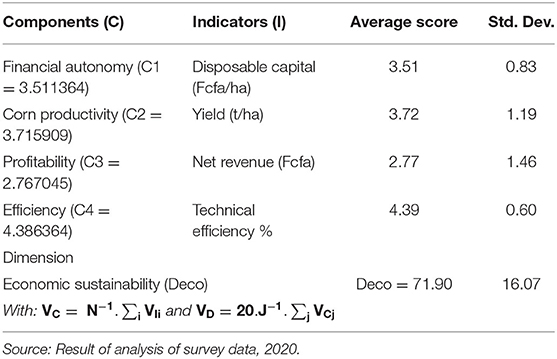
Table 3. Descriptive statistics on the economic sustainability of maize producers in the Plateaux Region of Togo.
This economic sustainability score of 71.90, which is much higher than the average score 50, is supported, in order of importance:
1) By the technical efficiency of producers (score = 4.39),
2) Maize productivity (score = 3.72) and
3) The financial autonomy acquired (score = 3.51).
The graphical representation (Figure 5) shows these three components that form the basis of the economic sustainability of these producers.
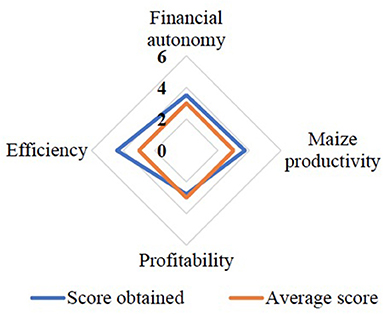
Figure 5. Scores of the components of the economic sustainability of maize producers in the Plateaux Region of Togo. Source: Result of analysis of survey data, 2020.
As Table 4 shows, the way in which the maize producers are organized has no effect on economic sustainability. However, the difference in the economic sustainability score concerning the available capital is significant depending on the individual or cooperative form of organization chosen by the producer (P < 0.05).
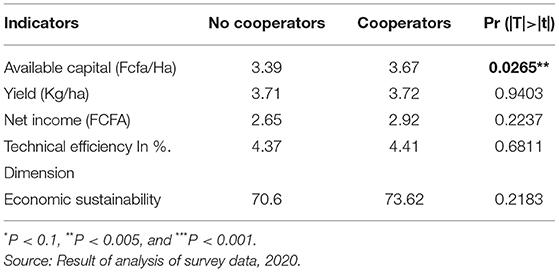
Table 4. Results of the estimation of the effect of the organization form of the maize producer in the Plateaux Region of Togo on economic sustainability.
According to the Table 5, maize cultivation in the Plateaux Region of Togo was environmentally sustainable (DurEnv = 62.47 ± 8.74).
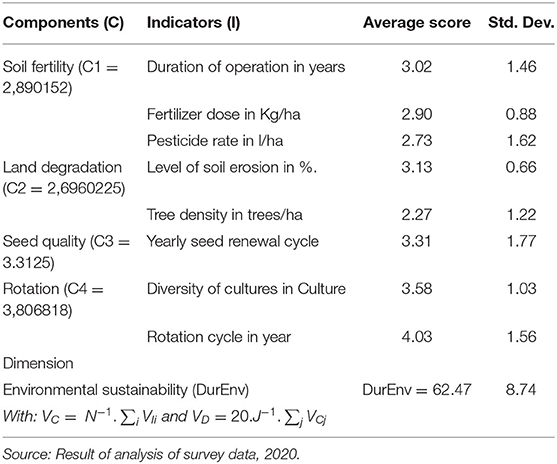
Table 5. Descriptive statistics on the environmental sustainability of maize producers in the Plateaux Region in Togo.
This environmental sustainability evaluation of 62.47, which is well above 50, is supported by:
1) Respect for the environment by maize producers through the use of quality seeds (score = 3.31 ± 1.77)
2) Taking into account crop rotation (score = 3.81 ± 1.3) and
3) Crop rotation cycle which takes the highest score of all the indicators of the dimension (score = 4.03 ± 1.56).
The graphical representation (Figure 6) shows the radar's attraction to the crop rotation and seed quality.
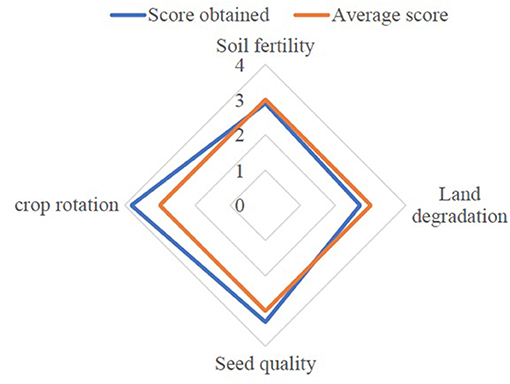
Figure 6. Scores of the components of environmental sustainability of maize producers in the Plateaux Region of Togo. Source: Result of analysis of survey data, 2020.
The form of organization of maize producers in the Plateaux Region of Togo, as shown in Table 6 has a significant effect on environmental sustainability (p < 0.05).
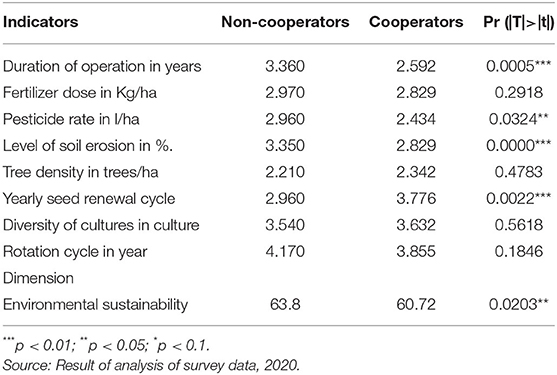
Table 6. Results of the estimation of the effect of the organization form of the maize producer in the Plateaux region of Togo on environmental sustainability.
The score for environmental sustainability was lower in cooperatives than when producers organized themselves into individual organizational forms. Significant differences were observed in indicators such as:
1) Farm duration, which scored better at the level of individual producers (p < 0.01),
2) The pesticide dose and the level of soil erosion, which scored higher at the level of non-cooperators (p < 0.05 and p < 0.01).
3) Only the seed renewal cycle showed a better score for cooperative producers (3.776 vs. 2.960 with p < 0.01).
According to Table 7, maize cultivation in the Plateaux Region of Togo was generally socially unsustainable with a below 50 score (DurSoc = 40.66 ± 9.49).
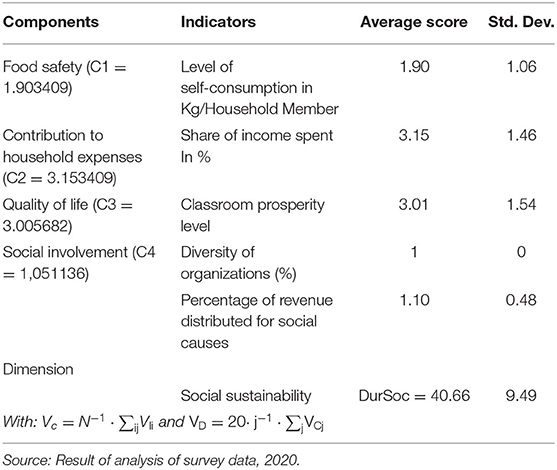
Table 7. Descriptive statistics on the social sustainability of maize producers in the Plateaux Region of Togo.
Two components showed very low social sustainability scores for this region. These are:
1) Social involvement (score = 1.05) and
2) Food security (score = 1.9).
The graphical representation (Figure 7) shows that the radar is centripetal at the level of these two components and slightly supported by the contribution to household expenditures (score = 3.15) and quality of life (score = 3.00).
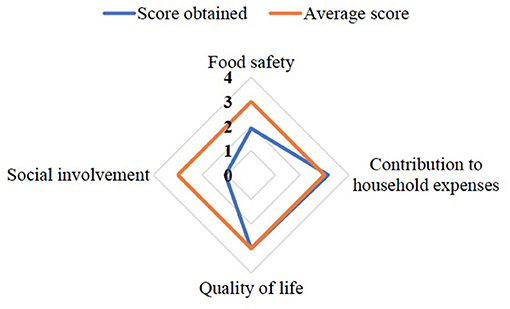
Figure 7. Scores of the components of social sustainability of maize producers in the Plateaux Region of Togo. Source: Result of analysis of survey data, 2020.
The way maize producers are organized has no significant effect on social sustainability (Table 8).
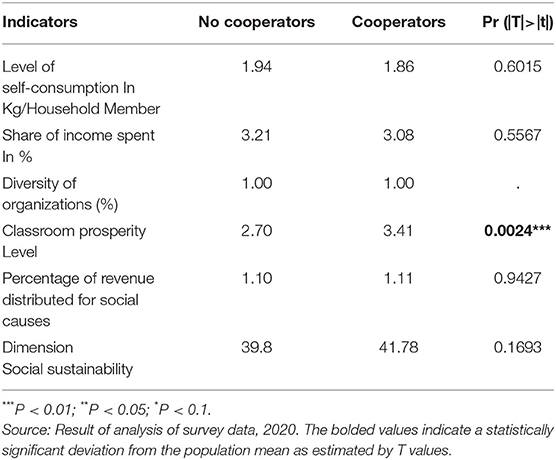
Table 8. Results of the estimation of the effect of the organization form of the maize producer in the Plateaux Region of Togo on social sustainability.
Nevertheless, depending on whether producers organized themselves individually or in cooperative organizational forms has a very significant effect (P < 0.01) on their levels of prosperity. Producers organized in cooperatives have a higher prosperity level score (score = 3.41) than those not belonging to any cooperative (score = 2.7).
The duration that a maize producer engaged in farming was found to be correlated with their choice of organizational form. Table 9 shows that with more years as a maize producer leads to a greater probability that the producer will choose to engage in the cooperative organizational form. Similarly, a greater time out of school indicated a greater probability that the producer would favor a cooperative organizational membership.
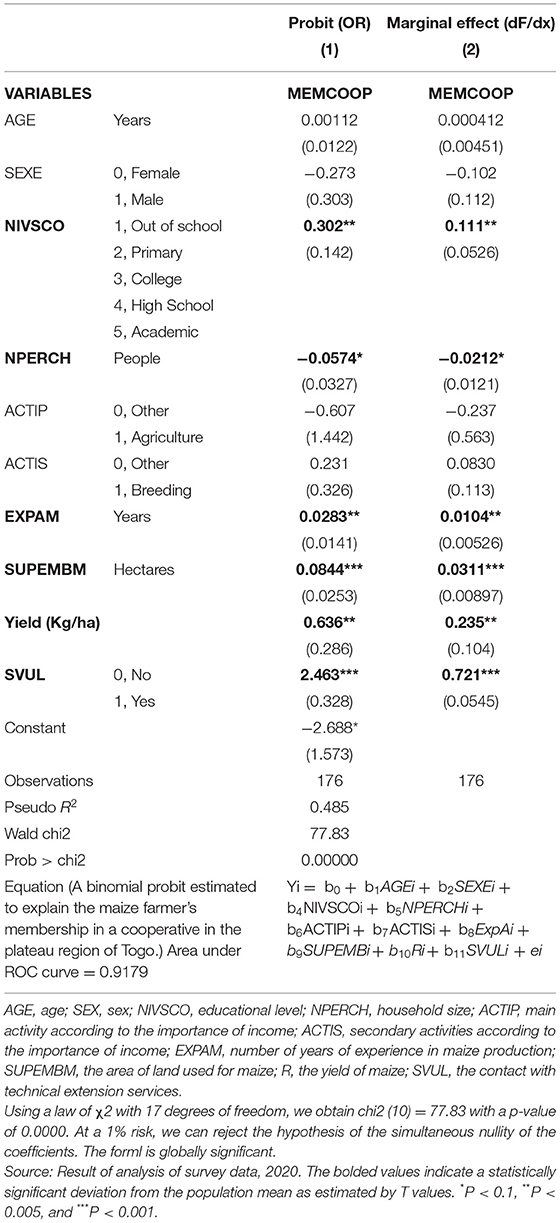
Table 9. Estimated form for identifying the determinants of cooperative membership in the Plateaux region of Togo.
The results show a high indicator score for economic sustainability for maize producers in the Plateaux Region of Togo. This is far from surprising given the government's focus on increasing yield, modernization, efficiency improvements through the development of processor focused cooperatives and other economic indicators of success. The subversion of Sen's Capability Approach to development through a focus only on economic capability development led cooperatives in the region to engage in Western style agricultural practices focused on high yields for greatest revenue generation. Without an educational programing that includes social and environmental capability development within the cooperative membership to enhance these indicators through Member Cohesion the cooperative can only be focused on economic indicators of success.
The emphasis of Togolese Government programs (both educational and developmental) were on traditional monocultural production to increase yields and increase producer income. Both are traditional economic development approaches focused on increasing economic growth and export. This approach has pushed, or guided, the cooperative membership toward a common purpose that emphasizes Côté's Cooperative Market Cohesion. This economic focus, or Cooperative Market Cohesion, is at the expense of social and environmental, or Membership Cohesion. Cooperative members are trained in the economic performance of their agricultural organization enhancing their income capabilities, but their capabilities to understand the ramifications of Western style agricultural practices on social and environmental indicators are not developed. As a result, cooperative membership does represent a cohesive group with improved capabilities, but these capabilities are singularly focused on traditional measures of development focused on economic growth. Essentially, the bike has one gear and it is focused on growing the economy.
For example, the separation between economic and environmental sustainable development capabilities can be seen in the increased access to credit afforded to those engaged in the cooperative organizational form. Acting as a group cooperatives focused on Cooperative Market Cohesion purchasing greater volumes of chemical inputs through credit purchases. The chemical inputs, such as fertilizer and pesticides, allow for the successful achievement of the goal of increased income through monoculture production and modernization within the sector. Furthermore, the use of conventional farming practices, e.g., monoculture production, assists the Togolese Government in its export-oriented development process. The development process taken up by the sector and government fits Sen's austere attitudinal mode of development as the economic outcomes push aside luxuries such as environmental sustainability. The cooperative's Member Cohesion that should emphasize friendlier modes of development through a Capability Approach that includes a focus on quality of life is de-emphasized in favor of traditional economic success indicators. The use of cooperatives as propulsive industries in the economic development process moves communities away from environmentally sustainable production practices including biodiversity which would emphasize community resiliency. Instead, the cooperative acts as a credit worthy entity for farmers in Togo allowing them to gain access to chemical inputs and monoculture seeds at the beginning of the season which they never had before in an attempt to increase their incomes.
The study's data also suggests that individual farmers appeared to have more sustainable environmental production practices as seen in their slightly higher environmental sustainability score when compared to cooperatives. This could be due to lack of access to capital for chemical input purchases. Individual farmers could also have a stronger connection to their land as a result of land ownership and a focus on individual consumption rather than export. The focus on individual consumption, or improved quality of life, points to Sen's Capability Approach to development at the individual level. The capabilities of individual farmers to produce a variety of crops to feed their households indicates a greater capability to develop a quality of life that staves off food insecurity and improves social and environmental sustainability.
The export-oriented production approach promoted by Togo's Extension Agents, in order to meet the government's development goals, meant a stronger focus on modern agricultural practices that involve chemical inputs, monocultures and mechanization that are not environmentally sustainable. Extension Agents focused on building capabilities for modern agricultural practices emphasizing the export economy along with agricultural modernization as outlined in the government's NDP which was based on neoliberal development approaches. What was missing is an educational strategy to build capabilities for social and environmental sustainability. The improved social and environmental capabilities would aid Member Cohesion and focus development on Sen's Capability Approach focused on quality of life. Without building the capabilities to understand social and environmental indicators it is difficult to stimulate Member Cohesion around development that includes social safety nets, biodiversity, democracy and other social and environmental measures of success.
The push via government programming for agricultural production guides producers toward economic development emphasizing increases in monoculture yields, i.e., toward austere attitudinal mode of development. This mode of development de-emphasizes social safety nets, social services and even democracy as they are considered luxuries that must give way to the development process. Our study shows that Cooperative Market Cohesion has overpowered Member Cohesion giving up luxuries such as social and environmental sustainability practices. For example, food security and social involvement are components of the social sustainability indicators that have not improved as a result of the increased capabilities within Togo's cooperatives. These two components have driven the social sustainability indicator of producers in the Togo Plateaux Region down. Food security was outlined as a goal of the Togolese Government's NDP, but food security was meant to be address by increased production ignoring the fact that monoculture production produces food for export not community consumption. Indeed, the scores of these two components have remained very low in both organizational forms, individual producers and cooperatives, as Togo emphasizes export development rather than agricultural capabilities to improve quality of life of individual producers.
The cooperative's seventh principle of concern for community should have been a mechanism to enhance Member Cohesion around a social mission such as food security. The cooperative's focus on community development should have produced an above average social sustainability score. In this study cooperatives in the Plateaux Region did not have an above average social sustainability score as they were focused on higher monoculture yields for higher income as emphasized by the Togo government and its use of cooperatives as propulsive industries. This economic focus appears to have developed capabilities within the membership to focus on economic outcomes rather than social or environmental. Member Cohesion has moved cooperative performance toward Cooperative Market Cohesion that emphasizes strategic market fit and de-emphasizes social development goals such as food security and social involvement.
As a result, whether a producer works individually or through the cooperative organizational form does not appear to positively effect to the social sustainability indicators. The lack of Member Cohesiveness in the area of social sustainability within Togolese agricultural sector is as a result of treating the cooperative organizational form solely as a means of economic production. With education and government extension services focused on building economic capabilities to meet their development goals there is very little chance for farmers build capabilities on environmental or social sustainability indicators. In addition, the emphasis on Cooperative Market Cohesion within the agropole as cooperatives act as propulsive industries is meant to ensure economic sustainability not environmental or social sustainability. There does not appear to be a push back from Member Cohesion around their social and environmental needs partly due to the promise that improved economic performance will provide environmental and social sustainability as well as the lack of capability to engage the cooperative as a social and environmentally focused organization.
What Côté's Management Equilibrium Theory tells us is that Cohesive Membership only works to promote econoimc, social and evironmental sustainaiblity if the membership develops the capabilities within all three areas of sustainability. With social and environmental indicators for sustainablity being far more complex and difficult to communicate it is difficult to build a Cohesive Membership around these socail and environmental indicators compared to economic indicators.
Interestingly, the educational level and scope for the agricultural producer has been found to be conducive to good information management around the functions of supply, production and disposal, but not social or environmental sustainability. The curriculum being taught within the schools and development programs are not focused toward the social or environmental indicators. Agricultural schools teaching production practices are focused on high yield, monoculture production or other environmentally unsustainable production practices that produce higher yields. Given that export oriented production focuses on higher yields per hectare the utilization of chemical inputs at the expense of environmental and social sustainability it is not surprising. Togo's producers are taking this production approach based on their new found educational capabilities.
To enhance Cooperative Member Cohesion and move cooperatives away from a strict focus on Cooperative Market Cohesion, educational programming needs to include topics on social and environmental sustainability. Zeweld Nugusse et al. (2013), Hill and Kumar (2008), and Mojo et al. (2017) concluded that education provides positive incentives for people in rural areas to join cooperatives as it increases awareness and understanding of agricultural production, but the agricultural production education must include a wider scope of capabilities that include social and environmental success factors.
This paper looked at the development approach utilized by Togolese maize producers in the Plateaux Region of Togo. The primary producers were divided into individual and cooperative producers. Each group was assessed for their standing on economic, environmental and social sustainability indicators. Would cooperative maize producers through Membership Cohesion push back against a strict economic focus to include environmental and social sustainability within their communities? Based on the findings in this study it would appear that Membership Cohesion, influenced by a lack capabilities on social and environmental indicators, gave way to Cooperative Market Cohesion. As a result, cooperative producers with new capabilities focused on economic outcomes as promoted by the Togolese Government's export-oriented approach to development did not promote social or environmental sustainability indicators. This Togolese development approach fits the austere attitudinal mode of development as outlined by Amartya Sen and moves away from his Capability Approach focused on quality of life. In the austere attitudinal mode of development social and environmental indicators are seen as more of a luxury and as such are not the key focus of community development.
The question remains, if cooperative members enhanced their capabilities on social and environmental indicators would there be an effective Polanyian style push back against Cooperative Market Cohesion? Would Member Cohesion look to the seventh cooperative principle of concern for community that seeks to ensure sustainability includes social and environmental indicators as well as economic. In Togo the focus of the agricultural cooperatives is on the economic as cooperatives act as propulsive industries for an export focused development process and the Togolese Government encourages the development of capabilities to enhance economic outputs through extension and educational programs.
What Côté's Management Equilibrium Theory provides is some insight into cooperative development and a potential approach to moving cooperatives toward all three sustainability incidcators. What the theory relies on, however, is that members have the capability of directing their cooperative organization to successfully meet the sustainability goals. Building thes capabilities requires educational resources to inform membership of not only the economic, but the social and environmental outcomes of the cooperatives activities. With pressure and resources from the Togolese Government to enhance only the economic indicators of sustainability how can coooperatives engage in social or environmental sustainability. As long as the neoliberal production practices and the austere mode of development remains the dominant paradigm, social and environmental capabilities along with their associated indicators will decline. Cooperative members will only be educated on how increase production leads to economic growth which will somehow resolve the community's social and environmental problems. There needs to be a more balanced approach to developing capabilities within the maize production sector to include social and environmantal understanding within cooperative membership so that they can act as a cohesive group pushing back against neoliberal agricultural practices.
The raw data supporting the conclusions of this article will be made available by the authors, without undue reservation.
The studies involving human participants were reviewed and approved by University of Parakou Ethics Committee. The patients/participants provided their written informed consent to participate in this study.
All authors listed have made a substantial, direct, and intellectual contribution to the work and approved it for publication.
The authors declare that the research was conducted in the absence of any commercial or financial relationships that could be construed as a potential conflict of interest.
All claims expressed in this article are solely those of the authors and do not necessarily represent those of their affiliated organizations, or those of the publisher, the editors and the reviewers. Any product that may be evaluated in this article, or claim that may be made by its manufacturer, is not guaranteed or endorsed by the publisher.
Abouharb, M. R., and Cingranelli, D. L. (2006). The human rights effects of world bank structural adjustment, 1981-2000. Int. Stud. Q. 50, 233–262. doi: 10.1111/j.1468-2478.2006.00401.x
Brebbia, C. A., Basorun, J. O., and Fasakin, J. O. (2012). Food security in nigeria: a development framework for strengthening igbemo-ekiti as a regional agropole. Int. J. Sustain. Dev. Plann. 7, 495–510. doi: 10.2495/SDP-V7-N4-495-510
City Population (2010a). Haho–Prefecture in Togo. Available online at: https://www.citypopulation.de/en/togo/admin/plateaux/211__haho/ (accessed October 27, 2020).
City Population (2010b). Ogou–Prefecture in Togo. Available online at: https://www.citypopulation.de/en/togo/admin/plateaux/201__ogou/ (accessed October 27, 2020).
City Population (2010c). Plateaux Region in Togo. Available online at: https://www.citypopulation.de/en/togo/admin/2__plateaux/ (accessed October 27, 2020).
Côté, D. (2019). Cooperative Management : An Effective Model Adapted to Future Challenges. Montréal, QC: Éditions JFD.
Darwent, D. (1975). “Growth points nad centres in regaional planning,” in Regional Policy Readings in Theory and Applications, ed F. Alonso (Cambridge, MA: MIT Press), 540.
de Olde, E. M., Oudshoorn, F. W., Sørensen, C. A. G., Bokkers, E. A. M., and de Boer, I. J. M. (2016). Assessing sustainability at farm-level: Lessons learned from a comparison of tools in practice. Ecol. Indic. 66, 391–404. doi: 10.1016/j.ecolind.2016.01.047
Fellegi, I. P. (2003). Official Statistics - Pressures and Challenges (ISI President's Invited Lecture, 2003). Internat. Statist. Rev. 72, 139–155.
Gafsi, M., and Favreau, J. L. (2010). “Appropriate method to assess the sustainability of organic farming systems,” in Paper presented at the 9th European IFSA symposium (Vienna).
Gafsi, M., Legagneux, B., Nguyen, G. v, and Robin, P. (2006). Towards sustainable farming systems: effectiveness and deficiency of the French procedure of sustainable agriculture. Agric. Syst. 90, 226–242. doi: 10.1016/j.agsy.2006.01.002
Gebana, A. G. (2020). Commodities. Available online at: https://www.gebana.com/en/b2b/commodities/ (accessed October 27, 2020).
Harwood, S., Wensing, E., and Ensign, P. (2016). “Place-based planning in remote regions: Cape York Peninsula, Australia and Nunavut, Canada,” in Settlements at the Edge: Remote Human Settlements in Developed Nations, eds A. Taylor, D. Carson, P. Ensign, L. Huskey, R. Rasmussen, and G. Saxinger (https://www.google.com/search?sxsrf=AOaemvKQoY_FzHDUQgYfpfy0SdxxDeEgvA:1636618040270&q=Cheltenham&stick=H4sIAAAAAAAAAOPgE-LSz9U3sLRIMS3OVeIEsQ1Nk7MstbSyk63084vSE_MyqxJLMvPzUDhWGamJKYWliUUlqUXFi1i5nDNSc0pS8zISc3ewMgIACgoVxVUAAAA&sa=X&ved=2ahUKEwjP67Cn7Y_0AhWRCIgKHd1eBU4QmxMoAXoECEMQAw Cheltenham: Edward Elgar), 124–150.
Hill, D., and Kumar, R. (2008). Global Neoliberalism and Education and Its Consequences [1 online resource (284 pages)]. Available online at: http://public.ebookcentral.proquest.com/choice/publicfullrecord.aspx?p=359056 (accessed October 7, 2020).
Invest in Togo (2020). An Overview of Agriculture in Togo: Present and Future… Available online at: https://www.togofirst.com/en/agriculture-panorama/2502-5007-an-overview-of-agriculture-in-togo-present-and-future (accessed October 20, 2020).
Lairez, J., Feschet, P., Aubin, J., Bockstaller, C., and Bouvarel, I. (2015). Evaluer la durabilité en agriculture. Agriculture et développement durable. Guide pour l'évaluation multicritère. Versailles: Quae/Educagri.
Landais, E. (1998). Agriculture durable: les fondements d'un nouveau contrat social. INRA Environ. Courier 33, 5–22.
Lobietti, M., l Michels, T., Poletti, S., Cabot, V. r., et al. (2018). La méthode IDEA Réunion–IDEA RUN–Indicateurs de durabilité des exploitations agricoles. Available online at: http://agritrop.cirad.fr/587936/1/IDEA_RUN_2018.pdf (accessed October 27, 2020).
McGill University (2002). Demographics of Togo. Available online at: https://www.cs.mcgill.ca/~rwest/wikispeedia/wpcd/wp/d/Demographics_of_Togo.htm (accessed October 27, 2020).
Ministree de l'Econoimie et des Finances (2021). Institut de Counseil et D'appui Technique. Available online at: http://dncmp-togo.com/index.php/2020/f-t-s/download/10-ppm-2020-fts/459-icat-fts (accessed October 27, 2020).
Mojo, D., Fischer, C., and Degefa, T. (2017). The determinants and economic impacts of membership in coffee farmer cooperatives: recent evidence from rural Ethiopia. J. Rural Stud. 50, 84–94. doi: 10.1016/j.jrurstud.2016.12.010
Omuta, G. E. D., and Onokerhoraye, A. G. (1986). Urban System and Planning for Africa. Benin City: University of Benin.
Perroux, F. O. (1950). Economic space: theory and applications. Q. J. Econ. 64, 89–104. doi: 10.2307/1881960
Piketty, T., and Goldhammer, A. (2014). Capital in the Twenty-First Century. Cambridge. MA: The Belknap Press of Harvard University Press.
Polanyi, K. (1957). The Great Transformation : The Political and Economic Origins of Our Time (1st Beacon paperback ed.). Boston, MA: Beacon Press.
Rasul, G., and Thapa, G. B. (2003). Sustainability analysis of ecological and conventional agricultural systems in Bangladesh. World Dev. 31, 1721–1741. doi: 10.1016/S0305-750X(03)00137-2
Rasul, G., and Thapa, G. B. (2004). Sustainability of ecological and conventional agricultural systems in Bangladesh: an assessment based on environmental, economic and social perspectives. Agric. Syst. 79, 327–351. doi: 10.1016/S0308-521X(03)00090-8
Republic of Togo (2012). Census of Agriculture 2012 Methodological Report. Available online at: http://www.fao.org/fileadmin/templates/ess/ess_test_folder/World_Census_Agriculture/Country_info_2010/Reports/Methodology_4/TGO_ENG_MET_2012.pdf (accessed October 7, 2020).
Roesch, A., Isenring, J., Keil, N., Jurt, C., Nemecek, T., Oberholzer, H., et al. (2016). Evaluation exhaustive et pratique de la durabilité des exploitations agricoles. Swiss Agric. Res. 7, 408–411.
Rostow, W. W. (1990). The Stages of Economic Growth : A Non-Communist Manifesto, 3rd Edn. Cambridge: Cambridge University Press.
Schader, C., Grenz, J., Meier, M., and Stolze, M. (2014). Scope and precision of sustainability assessment approaches to food systems. Ecol. Soc. Ecol. Soc. 19:42. doi: 10.5751/ES-06866-190342
Sibbons, J. L. H., and Boudeville, J. R. (1967). Problems of regional economic planning. Geogr. J. 133:556. doi: 10.2307/1794543
Taylor, J., and Lybbert, T. (2020). Essentials of Development Economics, 3rd Edn. Oakland, CA: Univerisity of California Press.
The World Bank Group (2020). Togo Overview. Available online at: https://www.worldbank.org/en/country/togo/overview (accessed October 27, 2020).
Togo. Direction générale de la statistique et de la comptabilité national. Direction des échanges et de la c. (2013). Recensement général de la population et de l'habitat (4éme RGPH), Togo–Novembre 2010: résultats définitifs détaillés. Lomé: Imp. ECHOS d'Afrique.
Togolese Government (2018). Togo National Development Plan (2018-2022). Lomé: Togolese Republic. Available online at: http://togoembassylondon.com/wp-content/uploads/2019/04/PND-2018-2022-ANGLAIS-15.pdf (accessed October 27, 2020).
Van Cauwenbergh, N., Biala, K., Bielders, C., Brouckaert, V., Franchois, L., Garcia Cidad, V., et al. (2007). SAFE—a hierarchical framework for assessing the sustainability of agricultural systems. Agric. Ecosyst. Environ. 120, 229–242. doi: 10.1016/j.agee.2006.09.006
Van Passel, S., Nevens, F., Mathijs, E., and Van Huylenbroeck, G. (2007). Measuring farm sustainability and explaining differences in sustainable efficiency. Ecol. Econ. 62, 149–161. doi: 10.1016/j.ecolecon.2006.06.008
Yegbemey, R. N., Bauer, S., Yabi, J. A., and Dossa, C. S. G. (2014). Novel participatory indicators of sustainability reveal weaknesses of maize cropping in Benin. Agron. Sustain. Dev. 34, 909–920. doi: 10.1007/s13593-014-0214-9
Zahm, F., Ugaglia, A., Barbier, J. M., Boureau, H., Del'homme, B., Gafsi, M., et al. (2019). Évaluer la durabilité des exploitations agricoles : La méthode IDEA v4, un cadre conceptuel combinant dimensions et propriétés de la durabilité. Cahiers Agric. 28, 1–10. doi: 10.1051/cagri/2019004
Keywords: cooperatives, agriculture, Equilibrium Management Theory, market failure, economic growth
Citation: Berge ST, Bokoumbo K, Johnson KA, Yabi JA and Yegbemey RN (2021) Cooperative Development: Sustainability Agricultural Planning Viewed Through Cooperative Equilibrium Management Theory in Togo, Africa. Front. Sustain. Food Syst. 5:758363. doi: 10.3389/fsufs.2021.758363
Received: 13 August 2021; Accepted: 28 October 2021;
Published: 30 November 2021.
Edited by:
Sara Epp, University of Guelph, CanadaReviewed by:
Viswanathan Pozhamkandath Karthiayani, Amrita Vishwa Vidyapeetham (Kochi Campus), IndiaCopyright © 2021 Berge, Bokoumbo, Johnson, Yabi and Yegbemey. This is an open-access article distributed under the terms of the Creative Commons Attribution License (CC BY). The use, distribution or reproduction in other forums is permitted, provided the original author(s) and the copyright owner(s) are credited and that the original publication in this journal is cited, in accordance with accepted academic practice. No use, distribution or reproduction is permitted which does not comply with these terms.
*Correspondence: Simon T. Berge, cy5iZXJnZUB1d2lubmlwZWcuY2E=
†These authors have contributed equally to this work and share first authorship
‡These authors have contributed equally to this work and share senior authorship
Disclaimer: All claims expressed in this article are solely those of the authors and do not necessarily represent those of their affiliated organizations, or those of the publisher, the editors and the reviewers. Any product that may be evaluated in this article or claim that may be made by its manufacturer is not guaranteed or endorsed by the publisher.
Research integrity at Frontiers

Learn more about the work of our research integrity team to safeguard the quality of each article we publish.